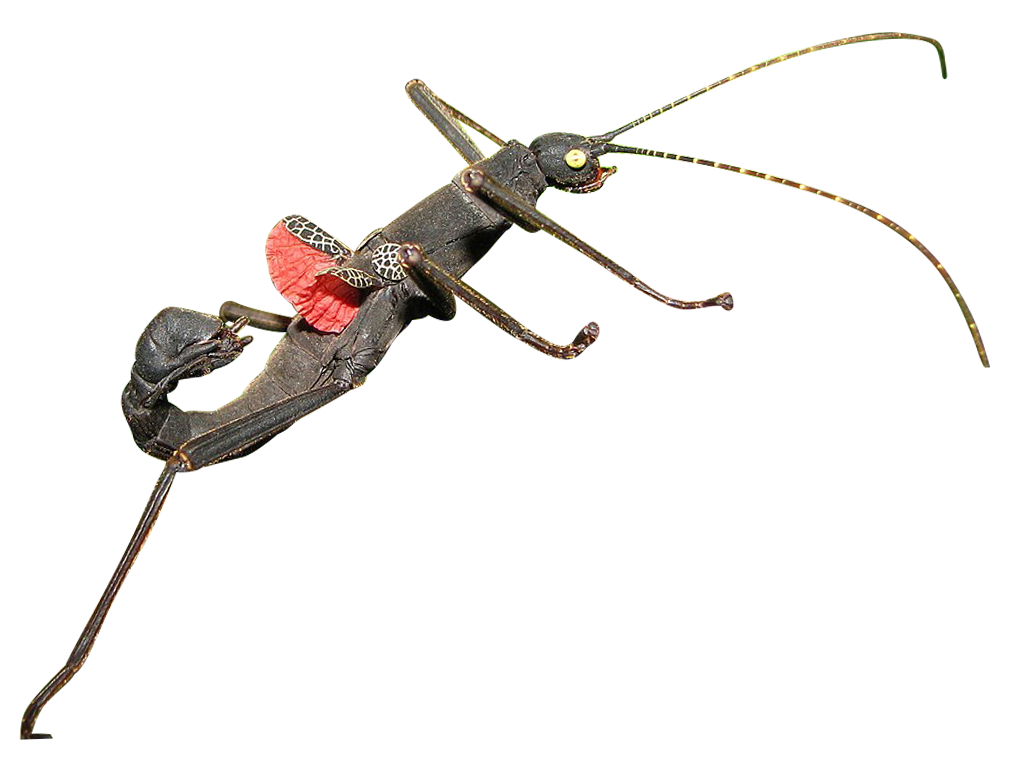Black beauty stick insect
Peruphasma schultei

Critically endangered stick
Black beauty stick insects belong to the order of Phasmatodea. The species was discovered as recently as 2005 and is a type of stick insect. So far, the species has not been much studied in the wild. The area in Peru where this stick insect lives is only 25km². This is why the black beauty stick insect is critically endangered, as the area is so small and at great risk of shrinking even more as the forest is cleared.
There are about 2,500 species of stick insects in the world. All stick insects have a natural camouflage that makes them resemble dry twigs, and they are mainly active at night. Black beauty stick insects defend themselves against predators by spraying a venom and raising their bright red wings as a threatening signal.
The black beauty stick insect has small, brightly red wings, that it uses to scare off predators.
Photo: Dragus-CC-BY-SA
Just like other stick insects, the black beauty stick insect eats leaves.
Photo: lofaesofa-CC-BY-NC
To grow, the black beauty stick insect has to shed its skin.
Photo: Michael-Schmalenstroer-CC-BY-SA
The male sits on the back of the female
Most species of stick insects have the ability to reproduce asexually. This means that females can lay eggs that hatch into new females, without having to mate with a male. The black beauty stick insect, on the other hand, requires mating between a female and a male in order to lay fertilised eggs. The male is smaller than the female and can sit on her back for long periods. They connect their rear ends to mate. The eggs take 3–4 months to hatch and then it takes about 5 months for the nymphs to reach maturity.
The male latches onto the female's abdomen with his own, and clings to her back to mate.
Photo: I-Luc-Viatour-CC-BY-SA
Small eggs from the black beauty stick insect.
Photo: Dragus-CC-BY-SA
A black beauty stick insect nymph.
Photo: Dragus-CC-BY-SA
Distribution worldwide
Peru.

Threat based on the Red List

Trade regulations
CITES: Not listed.